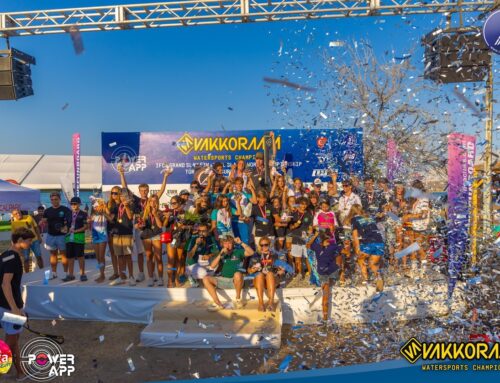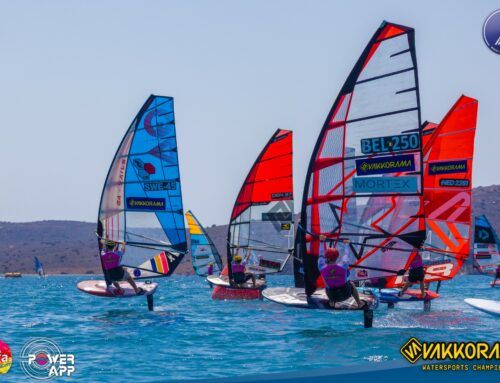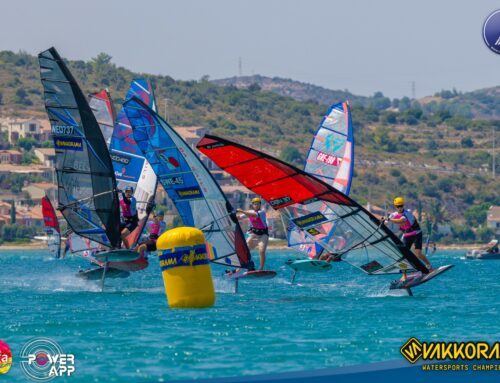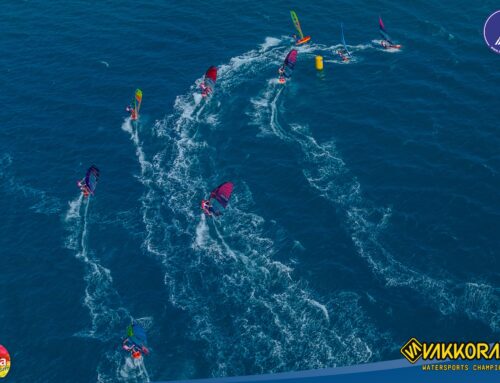A fight to overturn a decision to kick windsurfing out of the Olympic Games in 2016 has been promised by the windsurfers themselves as kiteboarding has been given the two medal events.[more]
“I am raw, sore, and shell-shocked by the decision,” said Rory Ramsden, secretary of the RSX board association, returning from the meeting in Italy of the world governing body, the International Sailing Federation (ISAF). The French are said to be “devastated”.
While commiserating with the windsurfers, Britain’s reigning world kiteboarding women’s champion, Steph Bridge, also of the UK Kitesurfer Association, said: “It’s a great decision.” Bridge is project managing an attempt by Richard Branson and his family to kiteboard across the Channel in the near future.
It would take a two thirds majority at ISAF’s annual general meeting in November to overturn the decision taken on a 19-17 vote by the ISAF council at the end of its mid-term meeting.
What rocked Ramsden was the way in which the tide turned against him at the final, emotionally charged meeting. John Crebbin, representing Ireland, made a strongly supportive speech in favour of kites. He was joined by American representative Charley Cook, Kamen Fillyov of Bulgaria, the chairman of ISAF’s windsurfing and kiteboarding committee, voted in favour of kites, there was unexpectedly strong support from Spain, and even a speech in favour from the former king of Greece.
Fillyov’s vice-chairman is Italy’s Alessandra Sensini, the reigning silver medallist in the windsurfer class and a former gold medallist.
Britain’s representative Chris Atkins is thought to have supported the continued choice of windsurfing. Afterwards John Derbyshire, racing and performance director of the Royal Yachting Association, said, diplomatically, that the decision “while an exciting prospect for a new discipline” would be a “huge blow to the windsurfing community” and that it appeared the ISAF council “wished to seize the opportunity rather than wait until (the) 2020 (Games).”
When windsurfers were introduced in 1984 it was a time when more and more recreational users were seen speeding up and down resort beaches. Now it is the kiteboarders who attract the attention.
Sailing is already doing everything it can to avoid being dropped from the Olympics, aware that it is the second most expensive sport to stage – equestrian is even more expensive – and that the entertainment, even cabaret, aspirations of the International Olympic Committee continue.
On the one hand it should allow new nations to play catch-up in a game where the racing side is still rather underdeveloped worldwide. On the other, it trashes a lot of “pathway” programmes to bring windsurfer youth squads through, still has questions over exactly what equipment and race formats will be used, and leaves the RSX class of windsurfer, which was developed at ISAF’s request specifically for the Olympics, rather in the wilderness.
It was decided not to approach the IOC for two extra medals as the total number of sailors allowed would still be 380, meaning everyone would be squeezed.
Well organised national bodies will find training and management programmes easily transferable and the number of kiteboarders is now relatively low, there will be a rush of new competitors, not least from the windsurfer class. “At the top end we will be ok,” said Britain’s Olympic sailing manager Stephen Park.
Costs will be about the same and Bridge, who defends her world title in Sardinia in October, points out that it is easy to check a kiteboard onto a plane. It fits inside a car and it is then just a walk to the beach.
They are dangerous bits of kit and are often banned from stretches of beach and, in the short term, wind conditions may be light in Rio de Janeiro in 2016. You cannot stand on a kiteboard like you can on a windsurfer.
But it will be seen at all the sailing world cup events by 2014 at the latest and on a television screen near you.
The Independent . May 7th 2012. by Stuart Alexander, sailing journalist.
Read the ISAF report – http://www.sailing.org/38281.php





